Apple iPhone 7 Plus vs LG V20
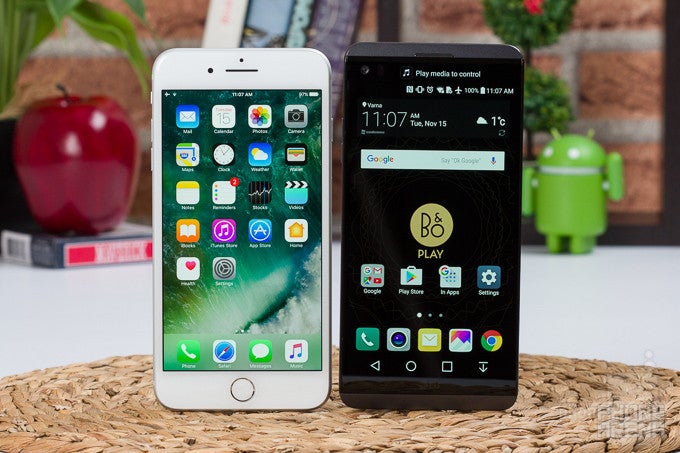
Introduction
In the battle for the best big phone, the Apple iPhone 7 Plus is one device that you cannot overlook.
Apple’s iPhone is not only the single best-selling phone out there, it also features one of the most powerful chips ever on a phone, has for a long while been a trend-setter for mobile photography, and – apart from the now dead Nexus series – seems to be the only phone that gets latest updates to its platform quickly and reliably.
This year, we see some Android manufacturers stepping up their game when it comes to software currency as well: the LG V20 is a big, 5.7-inch phone that in many ways rivals the iPhone 7 Plus, and – notably – it even comes with the latest version of Android, 7.0 Nougat, right out of the gate.
Both featuring dual rear shooters, the two phones have high aspirations as cameras, as well as creativity and productivity machines. But it’s the little differences and nuances that really make each one of them stand out: the V20 with its hi-res audio aspirations and secondary screen will appeal to a certain niche of power users, while the 7 Plus has a more mainstream appeal. Let’s dive in the details to learn the whole story about these two.
Design
The iPhone 7 Plus features the more streamlined, elegant design, but it’s also a heavy phone with huge bezels. The LG V20 is built like a tank, but lacks in elegance and is not water-proof.
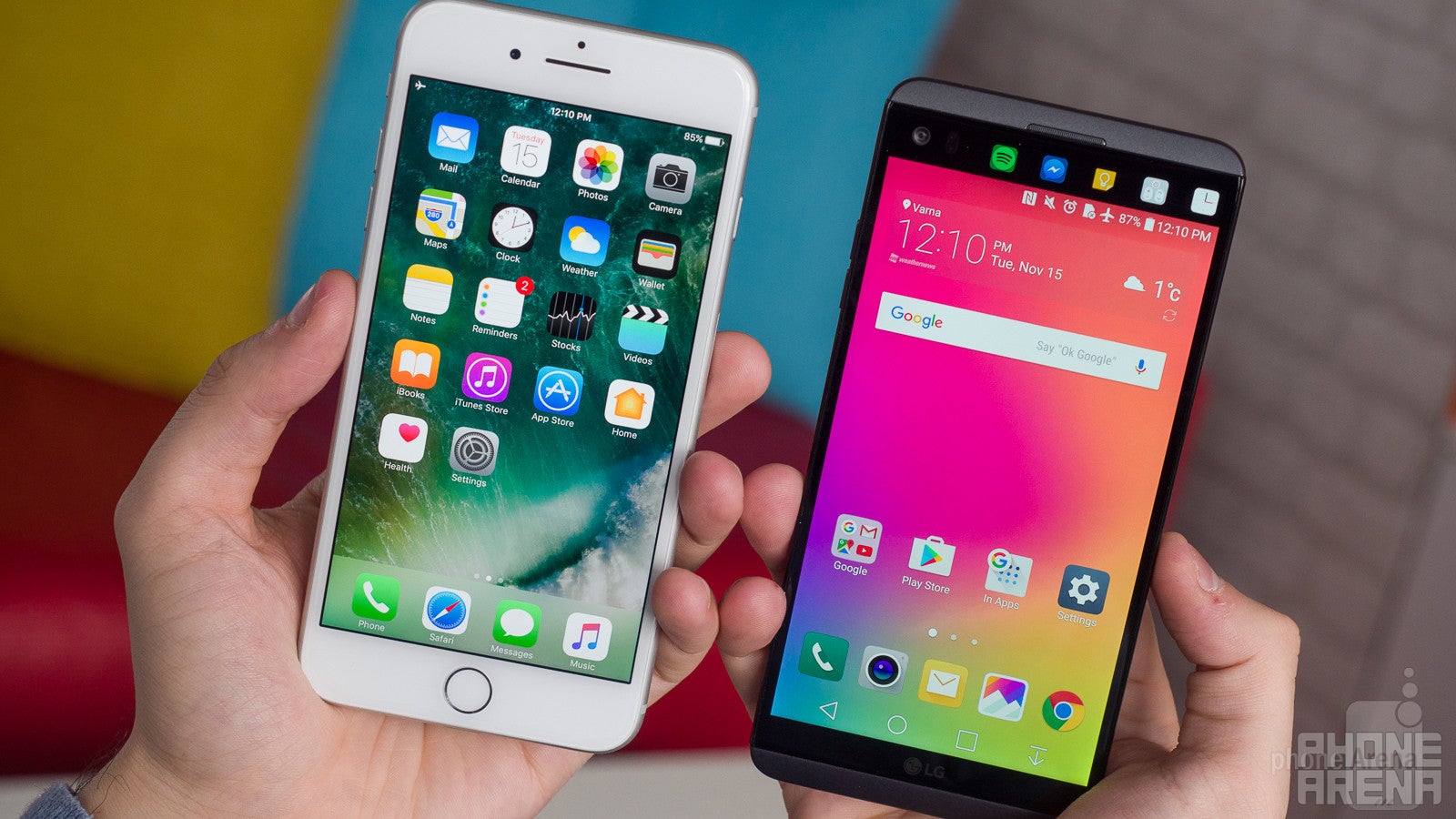
Both the Apple iPhone 7 Plus and LG V20 are made of metal, but while the iPhone 7 Plus has a holistic metal construction, the V20 has a large metal back cover with plastic strips on the top and the bottom. And while both feel solidly put together, the iPhone is the one with the more refined design with less seams and more elegant curves, while the V20 feels more like separate pieces put together rather than one inherent whole.
When speaking about big phones, or phablets, there are some with more manageable sizes and some truly gigantic ones. While the iPhone 7 Plus is one of the largest 5.5-inch phones out there, the LG V20 goes with an even larger, 5.7-inch display and ends up having an even bigger physical footprint than the iPhone. It’s taller, slightly wider and a hair thicker, slight differences that when considered all together are noticeable. Despite its smaller size, though, the iPhone is the heavier of these two rather weighty phones, and this heft is definitely an inconvenience if you walk with your phone in your pocket a lot.
Looking at the details around the body of the two phones, the LG V20 has an interesting button on the side. It has one sole function: press it to pop up the back cover and get easy access to the removable battery. Not everyone needs that, but with all the recent stories about exploding phones and fires, it’s nice to be able to simply remove the battery, or swap it on the go for an emergency battery boost. The V20 has its volume buttons on the side, but it keeps the power key on its back. The round home button actually clicks and also doubles as a fingerprint scanner (just a tap is required for a fingerprint reading) that works quickly and reliably. And yes, there are two rear cameras on the V20, but more on that later, in the camera section.
On the iPhone 7 Plus side, you have the familiar iPhone design with two important changes. The home key is no longer a physical button: nope, it does not physically travel and that clicking sensation you get when pressing it comes from the Taptic Engine, the vibration motor inside the iPhone. Is the feeling the same as pressing an actual physical key? Not really. Can you get used to it, though? We know we did easily enough to not consider it a problem, but not an improvement either. Then, there is the no-3.5mm jack situation: put simply, if you use the 3.5mm jack a lot, you’re clearly going to miss it, and the fact that there is a 3.5mm adapter in the box with the iPhone is a work-around, but not a remedy.
There is one key new feature on the iPhone 7 Plus that is nowhere to be found on the LG V20: water-resistance. The 7 Plus is IP67-certified, meaning that it can be submerged in water up to 1 meter (3.3 feet) deep for as long as 30 minutes without sustaining any damage. The feature is there to protect the phone in case you accidentally drop it in water or leave it out in the rain for a short while, but it’s not officially meant as an excuse for you to film under water and take it on your surfing trips.
Display
The 5.5” iPhone screen features better looking colors and is easier to see outdoors under the bright sunlight.
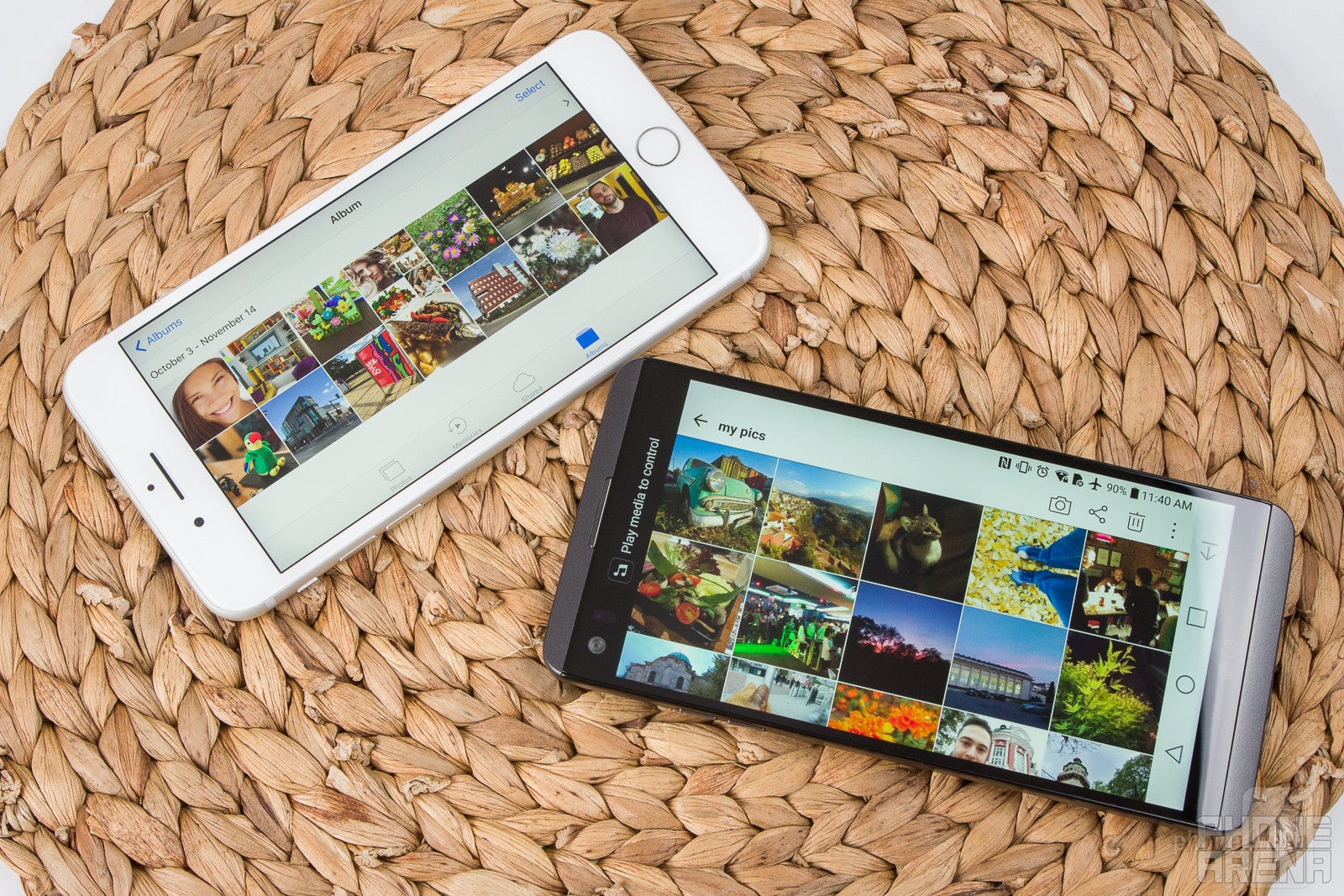
While many phone makers are jumping ship to AMOLED screens with their deep blacks and contrast, the iPhone 7 Plus and V20 both opt for IPS LCD displays. A 5.5-inch one with a resolution of 1080 x 1920 pixels on the iPhone, and a 5.7-inch one with a resolution of 1440 x 2560 pixels on the V20.
While technically the V20 is the sharper one, in real life it’s hard to see much of a sharpness difference. There is no visible pixelization on either of these two.
There is one small, but important thing that makes the two different, though: the LG V20 is equipped with a tiny secondary display right above the main panel that shows you the time and date, your recent notifications, quick shortcuts to apps, and it can be customized to do several other things. It’s a cool little addition that acts in two ways: first, it gives you a quick glimpse at important information without requiring you to turn the phone on, and second, it consumes just around 1% of battery every two hours, so it’s not too power hungry. However, it’s not a game-changer in any way, just a small touch that seems to do more good than bad.
What really matters is how pictures look on the main screen. The V20 has eye-popping colors that look flashy, but also – artificial. The iPhone 7 Plus, on the other hand, aims to look way more realistic, with natural color representation.
Both phones also can get very bright: the iPhone 7 Plus, however, shines brighter with a peak luminance of 672 nits against 537 nits on the V20. In reality, we found that the added brightness was important for better outdoor visibility, but what mattered more is how the screen on the iPhone dealt with reflections: they are much less visible than on the V20, and at the end of the day this makes the iPhone much more comfortable for use in challenging conditions such as outdoors on a sunny day.
At night, the V20 can drop to a minimal brightness level of 5 nits, which is OK for nighttime viewing. The iPhone 7 drops to even more forgiving 2 nits. Luckily, both phones have the useful Night Shift (iPhone) / Comfort View (LG) option that filters out blue light at night. This changes the colors on your screen to help your brain relax and prepare to sleep, something that blue light can prevent from happening.
Interface and features
The LG interface on top of Android is a bit of an overkill with excessive features, while iOS strikes a more reasonable balance of usability and simplicity.
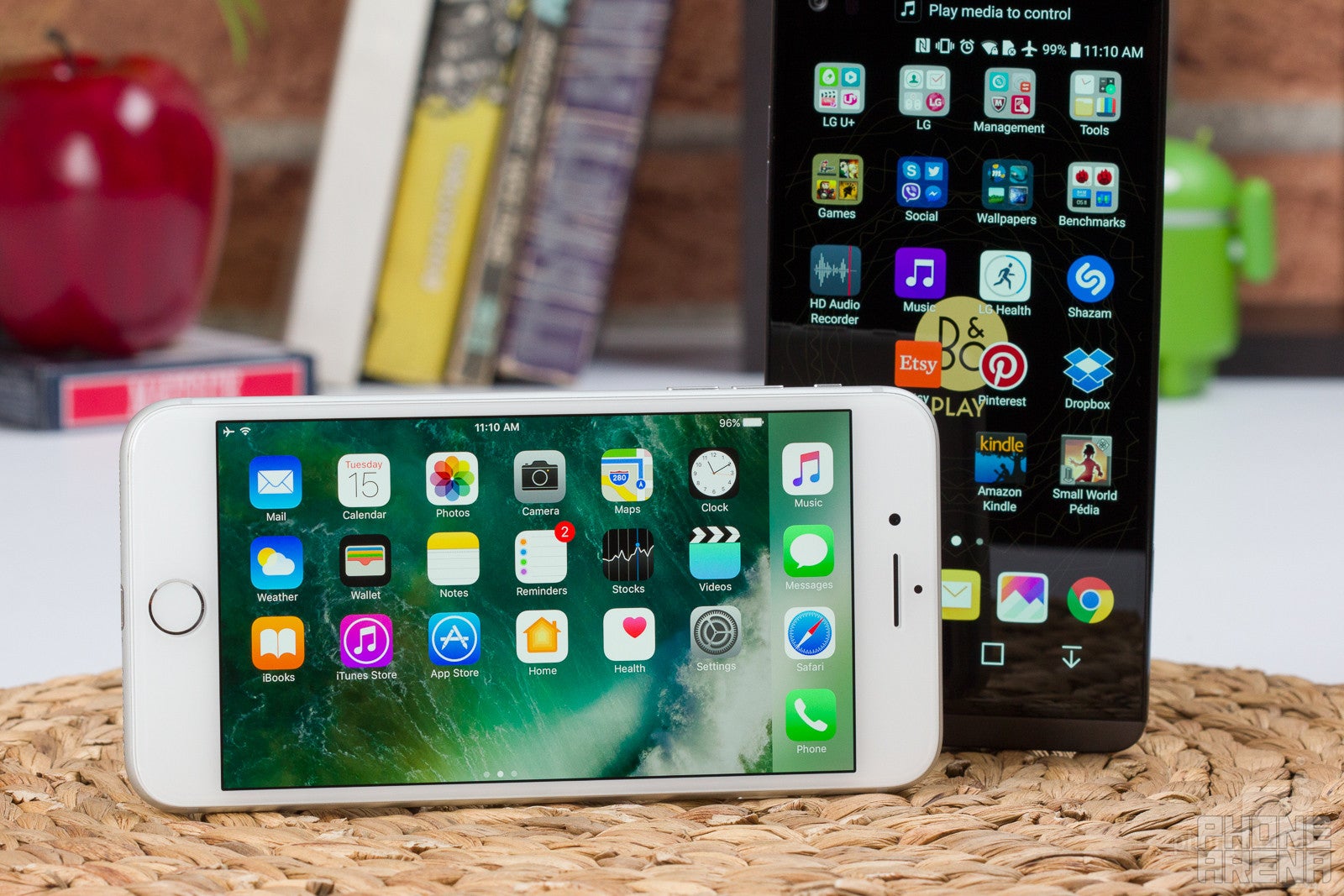
For years on, the app drawer was a staple of the Android ecosystem, but something seems to have changed in recent years. First, many Chinese phone makers aiming to copy the iPhone did away with the app drawer, and this year, with the V20, LG has also disabled the app drawer in favor of an iPhone-esque Android interface.
You can enable an app drawer, but it’s a bit of a hassle: you have to locate the LG SmartWorld app and there, search for an app called LG Home that you then install and apply as a home screen launcher that comes with an app drawer.
There is that similarity, but also another one: the LG V20 actually runs on the latest Android 7.0 Nougat software. This is great. Previously, you could get a new major Android phone release with an old version of the software, a big annoyance that LG does away with. The iPhone 7 Plus, on its part, also features the latest iOS 10 version. It still remains to be seen how LG will deal with future updates, but so far, it’s up to a good start.
In general terms, Android remains the open and more customizable system, while Apple’s ecosystem is the ‘closed’ one, with less customization options, more limited access to the system, but that is also the beauty of iOS: this way Apple is able to keep the platform more secure, prevent app piracy, and enjoy a more vibrant app and games ecosystem.
Put quite frankly, though, this simplicity of iOS plays to its advantage: everything feels less cluttered and more focused. The V20 with its secondary display and a ton of options often feels overwhelming, while some advertized features like the signature wallpapers are nothing more than a gimmick with a poorly stylized name on top of a rather generic looking picture.
A key advantage of the iPhone 7 Plus and iOS is the 3D Touch functionality that adds a few quick shortcuts to the iOS experience. Core apps like iMessage are now also much richer and more popular that the stock messenger on Android, an important reason that keeps iPhone users in the Apple ecosystem.
Performance, Processor and Memory
The iPhone’s A10 system chip beats the Snapdragon 820 in benchmarks, and it also performs smoother in real life. The V20 feels fast, but a bit too jerky at times.
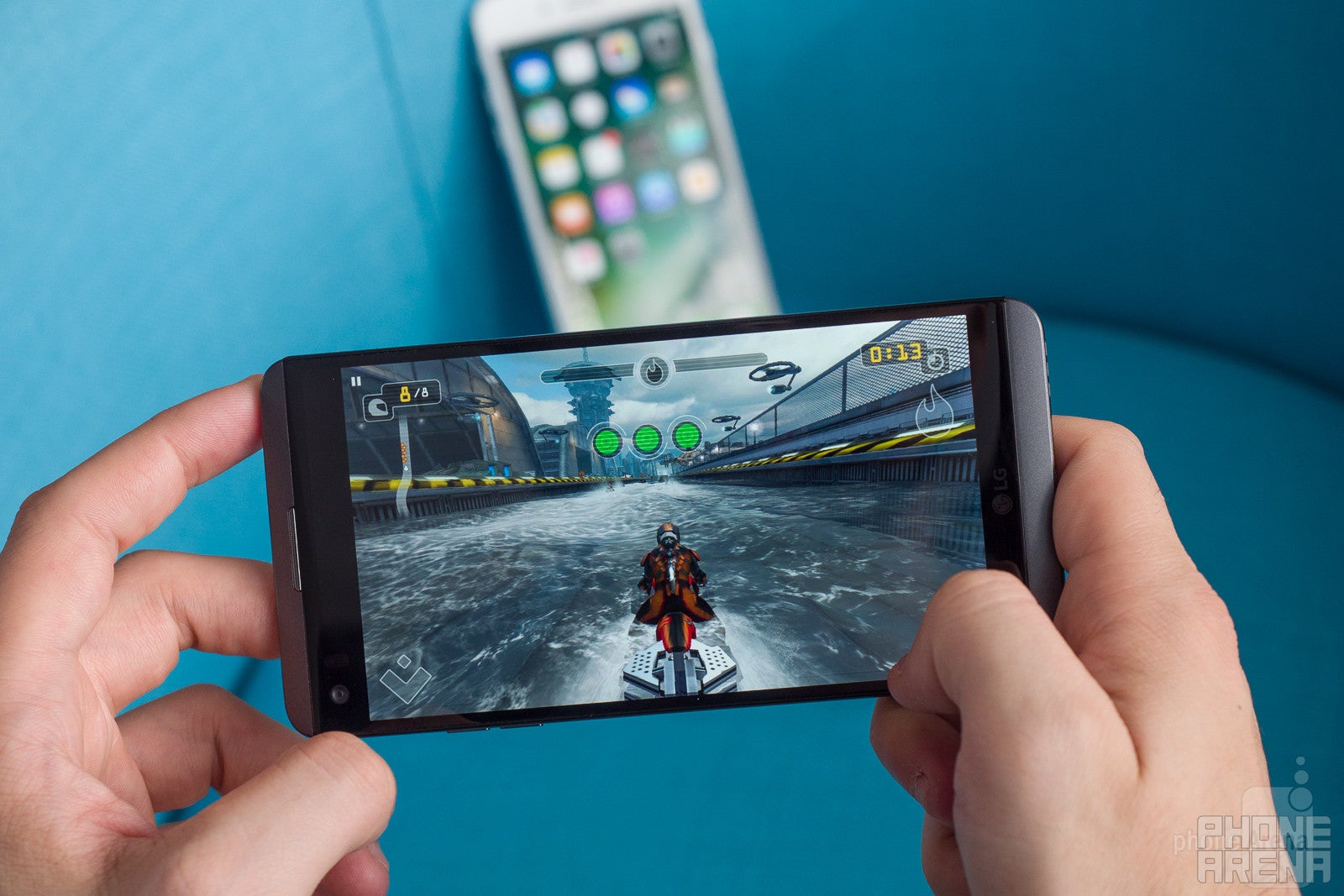
The iPhone 7 Plus is powered by the latest and most powerful Apple-made A10 Fusion system chip, while the LG V20 uses the Qualcomm Snapdragon 820 SoC that most 2016 flagships use.
Then, there are other specs: the iPhone has 3GB of RAM, while the V20 has 4GB. More RAM makes it possible to have your game on pause while you are doing other stuff on your phone and even completely forget about it. With a lot of RAM, the phone can keep it open and resume to it right away when you remember to start playing the next day. Cool, but hardly something that will be a deal-breaker.
What matters more is how the phones run in everyday tasks and if they lag. Luckily, both do not lag and respond quickly. The iPhone, however, is the smoother one, with less jittery action and more soothing animations and transitions, while the V20 is fast, but not as smooth, with a very slight stutter here and there. Barely noticeable, yet it comes out in comparison.
Power users will look at benchmarks and benchmarks show one thing clearly: the A10 Fusion in the iPhone 7 Plus is more powerful in both CPU-demanding tasks and in games and other graphics-intense apps.
The iPhone 7 Plus is offered in three versions, differing by storage and price: there’s a 32GB, 128GB and 256GB model of the 7 Plus, and none of them features a microSD card memory expansion slot. The LG V20, on its part, is offered in a single, 64GB version. This is a great starting point for native storage, but power users might need more. Luckily, LG does provide a microSD card slot that you can use to expand the existing storage.
Camera
Both are excellent camera phones. Secondary cameras are also great, but different: the wide-angle secondary cam on the V20 captures stunning landscapes, while the telephoto secondary cam on the iPhone is great for portraits.
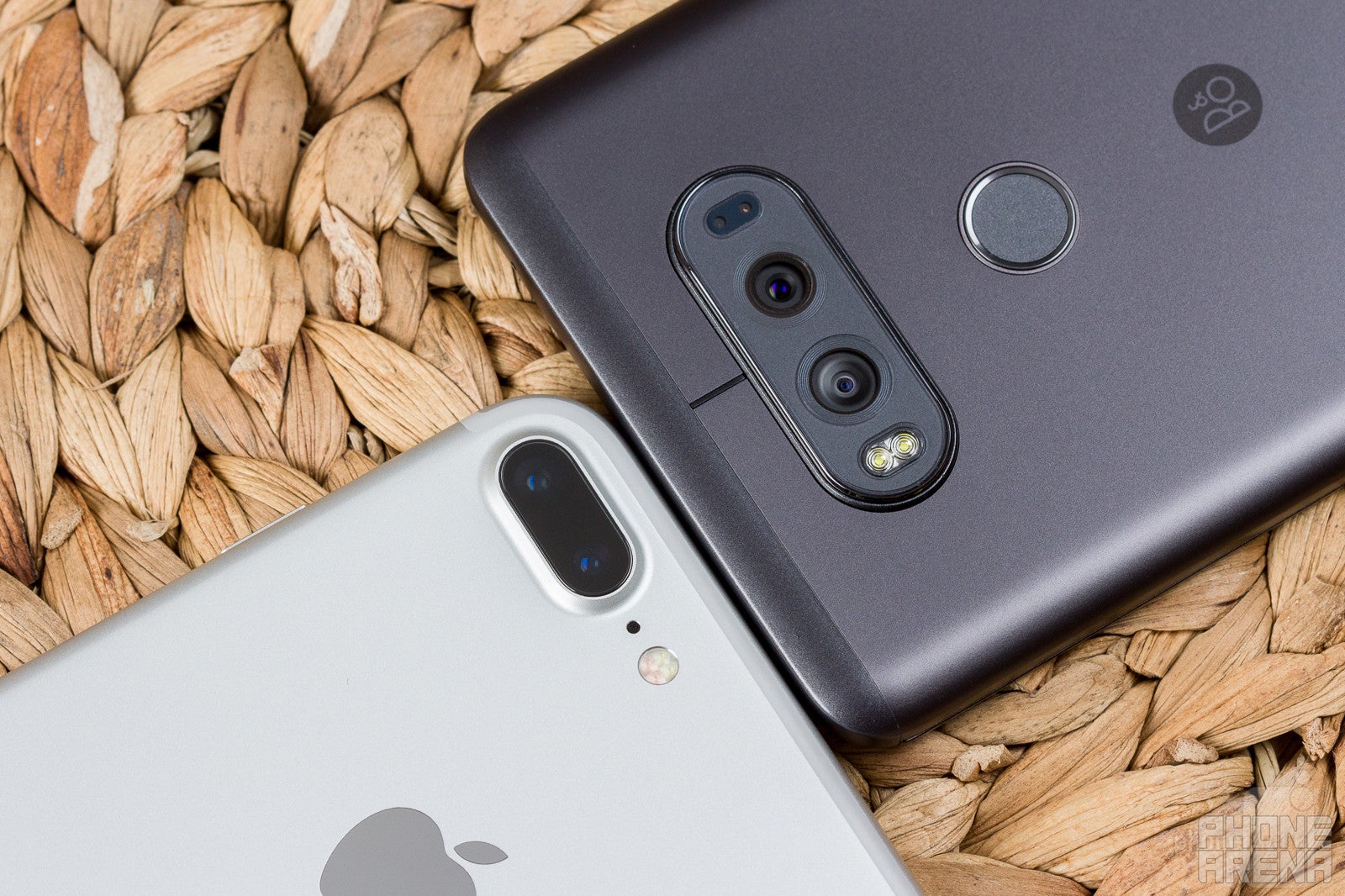
While processors and other technologies are rapidly improving, it seems that it is the camera department, where we see major improvements and changes in recent years. This year has been particularly fruitful: the iPhone 7 Plus and LG V20 both feature dual rear camera systems, something practically unheard of before. However, their systems also differ substantially: Apple adds a secondary rear camera with 2x zoom and a nice bokeh mode for portraits, while LG’s secondary rear cam goes in the other direction to a super wide viewing angle that allows for stunning landscape pictures.
Technically, here are the camera specs: the iPhone 7 has a 12MP 1/3" main sensor with an f/1.8 28mm (35mm equivalent) lens and a smaller, 12MP 1/3.6” sensor with an f/2.8 56mm lens, while the LG V20 features a larger-than-the iPhone 16MP 1/2.6” main sensor with an f/1.8 29mm lens and a secondary, 8MP 1/3.2” sensor with an f/2.4 12mm lens.
Both phones feature noticeable camera bumps: the iPhone has embraced the bump with a more streamlined design, but the V20 takes the bump to the next level with a huge visor-like design. Early tests show that the glass protecting the whole camera setup on the V20 is easy to shatter, so we recommend extra caution with it.
The camera app on the iPhone 7 Plus is delightfully simple: you can easily tweak exposure, but there are no further manual controls (but there are third-party apps for that). The LG V20 camera app comes with different modes: you can use the similarly simple auto mode, or go for full-on manual controls for maximum flexibility.
What you’ve come here for, however, is to learn not about just specs, but about the actual image quality.
Let’s do this differently this time around: we will comment on a few pictures one by one to point out the differences.
#1: Landscapes: the woods, creating space with a wide-angle camera
We captured a few pictures on our way back from lunch. The office is located just outside the city in an asphalt-laden industrial zone, but there is this small strip of trees that almost looks like you’re in the woods. Color on both pictures here look beautiful: the cold blue winter skies, the warm foliage, it’s a good-looking picture on both phones. However, you can really underline the scale of the place by capturing it all with the secondary camera on the LG V20. The 12mm super wide shooter allows you to capture something that is much more memorable than the regular cameras. Sure, that picture has a ton of distortion at the edges and is not technically as perfectly detailed, but it’s much more impactful.
#2: Portrait mode: one big difference
Let’s jump straight to the iPhone 7 Plus secondary rear camera now. Apple calls it a telephoto lens and bundles it with a Portrait mode that blurs the background to make your subject stand out. In reality, it’s not a telephoto lens in photographic terms, it’s a normal, 56mm lens, where normal in photog’s lingo means that it gives you a perspective close to what your eyes are seeing. While this lens is of little use in landscapes like the previous one, you can use it for people portraits and shots of flowers, pets, toys, and a ton more. It’s particularly good in those cases because a wider lens like the ones usually used on phones distort facial features and make for ugly, oversized noses in portraits (for example).
While you can use it in the regular photo mode, we strongly recommend you use the new Portrait mode. It gives beautiful, creamy backgrounds and makes a dramatic difference. Portraits look stunning. Pets looks stunning. Flowers looks stunning. Portrait mode is technically for portraits, but you can use it for much more. See what it can do in the samples, it really is something special.
#3: Dynamics
When you’re shooting against the sun (you should try to avoid that, but people do it all the time), it’s usually extra hard to get a good image. The reason is that the sun is too bright and it makes all other objects look way too dark. Being able to capture a balanced image where the phone sees that and adjusts accordingly, means that it has a good dynamic range, the ability to capture a lot of subtlety between the very brightest and darkest of an image.
The iPhone is a clear winner here: notice how the V20 makes the building indistinguishable, which turns the image to be almost unusable, while the iPhone judges the situation correctly and produces a good-looking image.
#4: Challenging color: getting the white balance right
While we got good colors on most pictures with both phones, we saw a few pictures, where the LG V20 got confused. The Porsche badge in particular is bad: the V20 made it overly cold, with unappealing and unrealistic colors, while the iPhone was able to get much more pleasing colors. In a few other cases, the LG went for unrealistic, way too cold colors.
#5: Selfie
The LG supports a wide capture for group selfies, as well as a regular view and it captures fairly good-looking images with pleasing colors. The iPhone lacks a group selfie view, but the regular selfie looks better than what you get on the V20: detail is much sharper, you can actually see the skin detail (while it is almost completely blurred on the V20) color is a bit better balanced, and there is a lot more background blur that is crucial to a good selfie.
The iPhone also has the Live Photos option that captures a moment before and after the image, and animates your otherwise still photograph memories. The V20 lacks such a cool feature.
In terms of video quality, both phones record 4K video at 30 frames per second. The bit-rate on both is around 45 Mbps, but the iPhone has the much better looking footage. Its big advantage is in the faster and more consistent auto-focus that does not hunt for focus, but locks on your subject quickly and changes fast when the situation requires it. Video stabilization is also superior on the iPhone, and overall it does a bit better in terms of detail and has slightly punchier colors. The LG V20 is definitely not far behind, though: it has one of the most pleasant and realistic colors on a smartphone, and unlike many other devices, it does not go for a ton of artificial oversaturation.
Multimedia and sound quality
Hi-res audio will please music professionals, but for the regular users, the difference is almost imperceptible. Then again, the iPhone does not have a 3.5mm jack. #donglelife
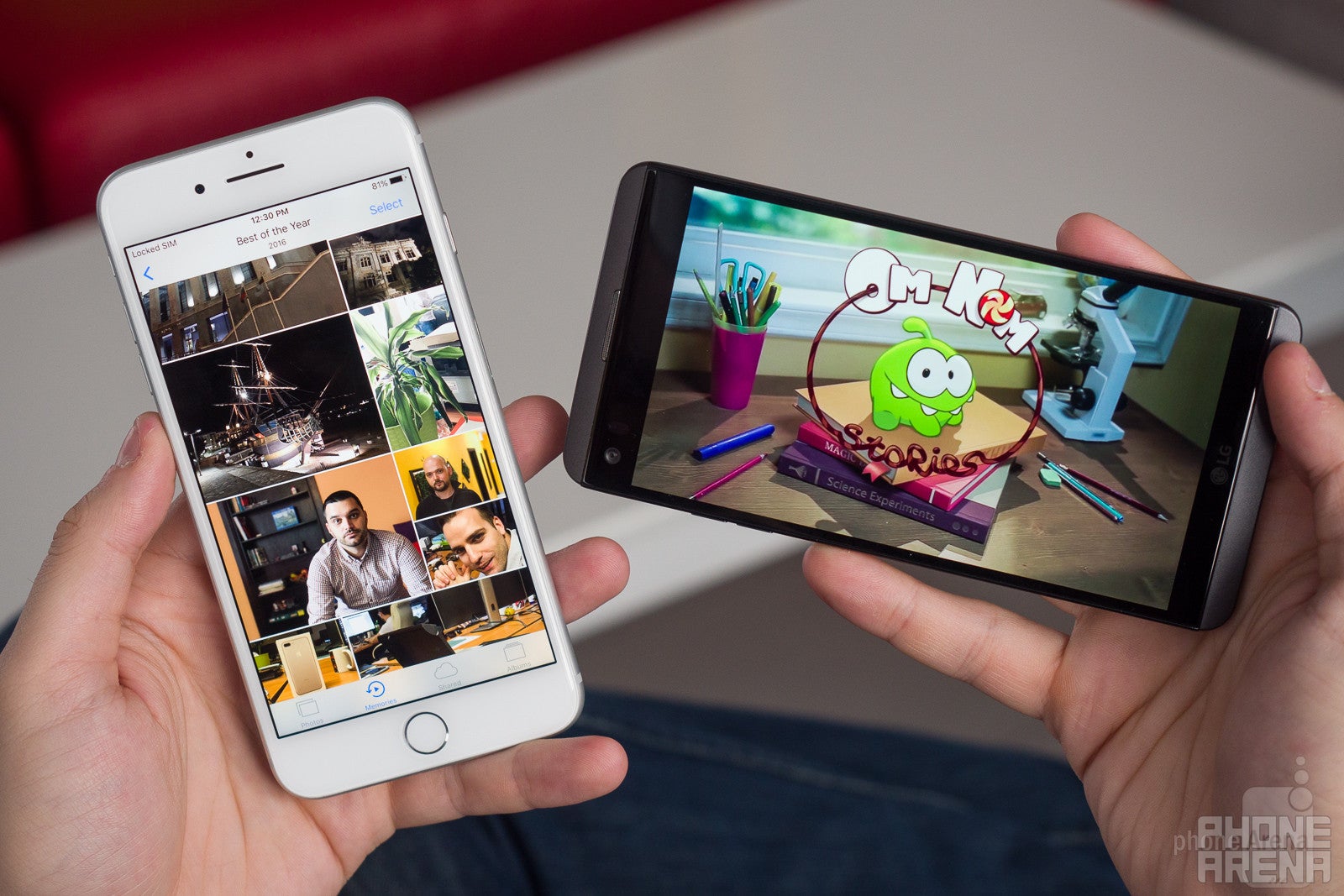
The big story about the LG V20 is that it has not one, but four DACs (digital-to-analog converters), a key component for good audio quality, with low noise and less distortion. The audio amplifier inside the V20 is also capable of driving professional-grade headphones, which require a lot of power. This is a nice thing to have, but it will affect mostly audio professionals and enthusiasts that listen to lossless or very high quality audio files on expensive headphones. With regular phones and regular music services, the difference with the iPhone 7 Plus is very hard to notice for the regular user.
It’s also nice that the V20 has three high-performance microphones that are fine-tuned to be able to record loud music without clipping. This makes the V20 a great tool for capturing not just videos, but also the audio at a concert, club or other loud venues.
Apple has a new speaker system in the iPhone 7 Plus: along with the traditional bottom-firing speaker, there is now a secondary, forward-facing speaker built right in the earpiece. This helps make sound louder and more impactful. The LG V20, on the other hand, has a single bottom-firing speaker that provides decent quality, but is a bit less loud and clear than on the iPhone.
Then again, we go back to the lack of a 3.5mm headset jack on the iPhone 7 Plus. It’s an omission that will affect many: those who already have a set of good 3.5mm headphones, those who plug in their phone to the AUX port on their car, or those who play to their home sound system directly via a phone.
Call quality
We have no major complaints about call quality on either phone: both sound sufficiently clear and loud to be able to carry out conversations with ease.
If we had to pick the nits, we’d say that voices sound a bit clearer on the iPhone 7 Plus, but the difference is not that big, and we’d call it a draw between the two.
Battery life
The V20 has a removable battery and fast charging, but the iPhone has the much superior battery life, and this is what most users care about.
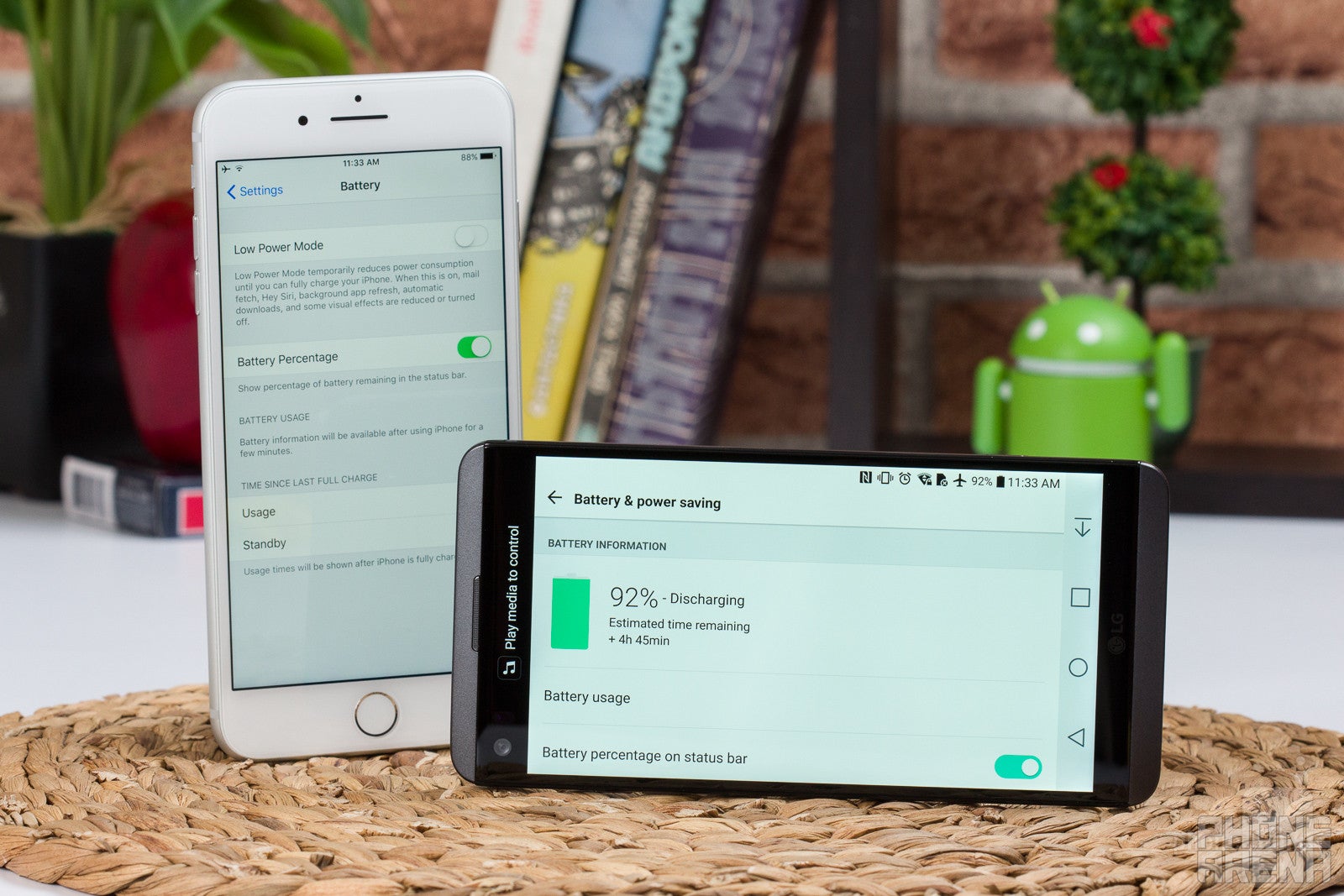
Apple’s iPhone 7 Plus is able to squeeze some seriously impressive battery life out of the smallish for Android standards size of its battery: it has a 2,900 mAh battery, smaller than the 3,200 mAh one in the LG V20.
Both in real life and in our custom battery test, we saw the iPhone 7 Plus outlast the V20 by a big margin. We tested both phones with their screens set at the same brightness (200 nits, a level comfortable for indoor use) and found that the iPhone lasted an excellent 9 hours and 5 minutes, at the top of our charts, while the V20 lasted an average 6 hours and 23 minutes.
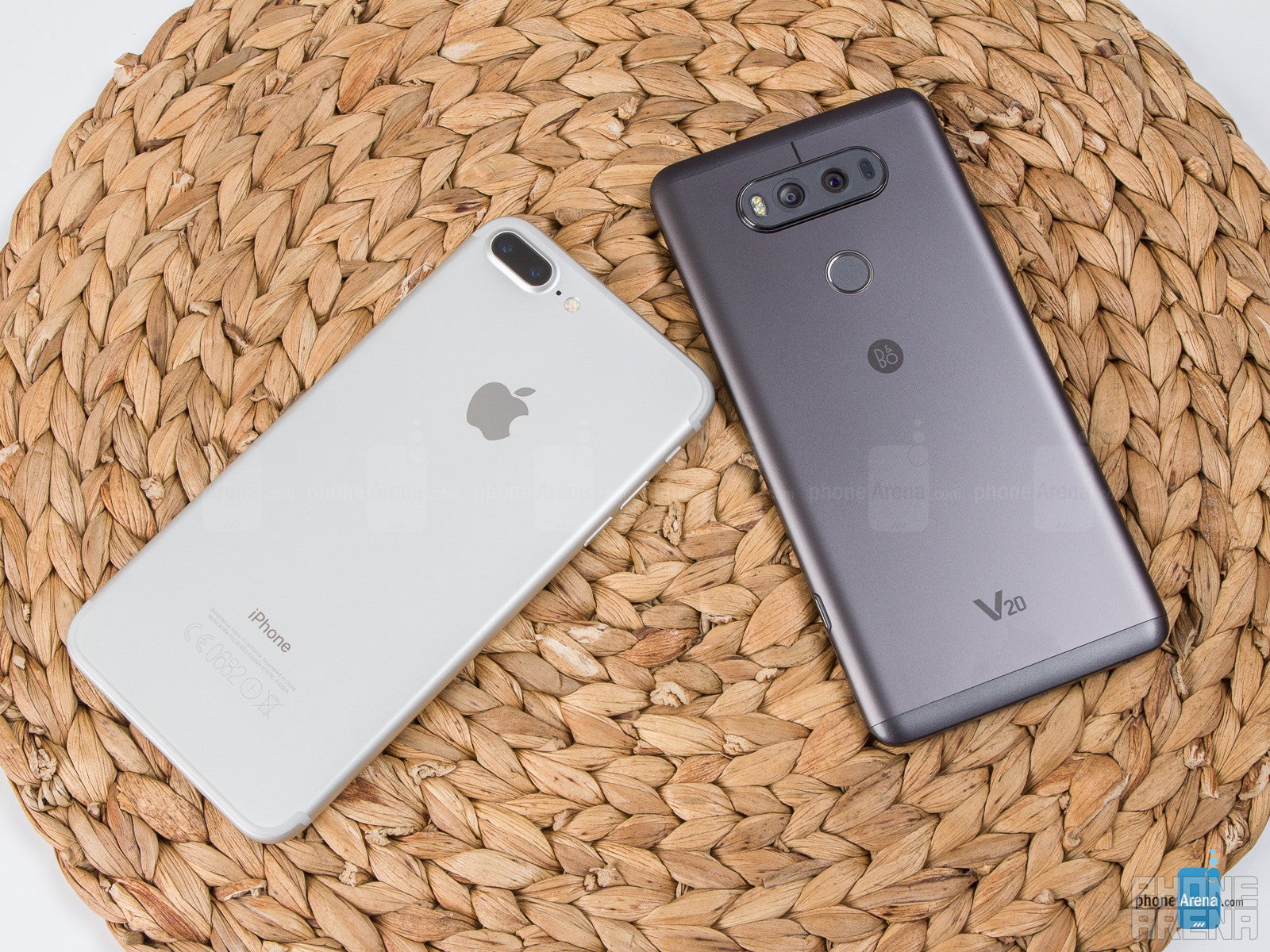
While it’s not a complete remedy for its average battery life, the V20 does recharge extremely fast. You can plug it for 15 minutes or half an hour, and you will get a substantial battery boost. The whole charge takes just an hour and 16 minutes, while the iPhone 7 Plus takes an excruciatingly long 3 hours and 17 minutes to charge from 0 to 100%.
The LG V20 is also the only mainstream flagship in 2016 to feature an easily removable battery. Power users could pick up a second battery for around $40 and swap batteries on the go for those emergency situations or travels.
Conclusion
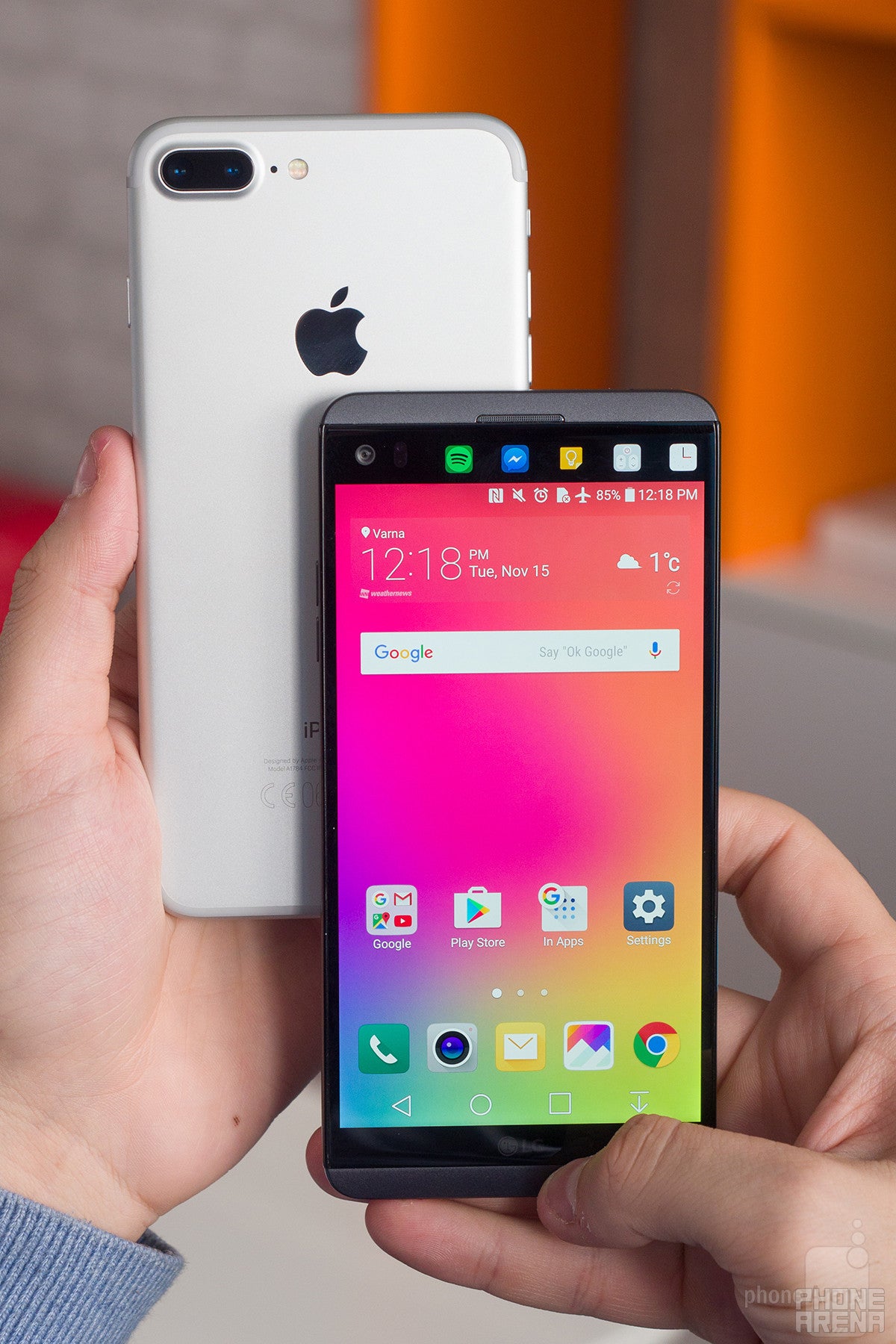
Prices for the V20 vary quite weirdly: Verizon charges $672 for the V20, T-Mobile lists a $770 price, while AT&T sells it for $830, but at an average of $770 the V20 starts at the same price as the iPhone 7 Plus.
On its side, it has double the native storage: 64GB vs 32 gigs on the iPhone, and the option to use a microSD card. It has a high-quality audio that will appeal to professionals, it has a removable battery, and it has a fast interface and very good camera. And it runs the latest Android 7.0 Nougat.
The iPhone, however, has the simpler interface with less of the confusion that comes with an overkill of options. It has the slightly better camera: pictures turn out a bit better, videos turn out much better, and Portrait mode is not perfect, but it’s one of the coolest new phone camera features. It’s not a gimmick. With a more solid and reliable battery life, a more refined ecosystem of apps and games, and a few neat tricks like waterproofing, the iPhone 7 Plus just seems like the better large phone for the majority of people. If you’re not among this majority, though, that’s okay: the LG V20 is a good phone for those few people that like its special feats.
Apple iPhone 7 Plus
Pros
- Great looking display
- Secondary camera with Portratit mode is a lot of fun
- Water resistance is a nice extra
- Faster performance than any other phone currently on the market
- Improved main camera with great stabilization, good low light capture
- Rich app and game ecosystem
- Very good battery life
LG V20
Pros
- Excellent audio quality
- Secondary wide-angle camera captures stunning landscapes
- Secondary display is a nice extra
- Excellent main camera
- Easily swappable battery
- Expandable storage
Follow us on Google News


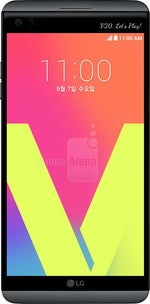




















Things that are NOT allowed:
To help keep our community safe and free from spam, we apply temporary limits to newly created accounts: